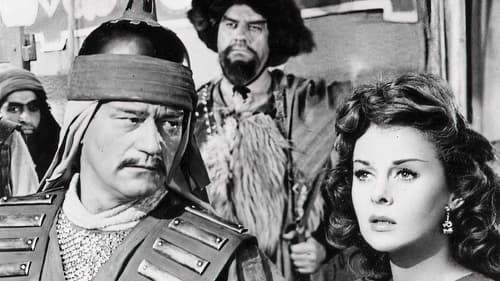Tungalag Tamir (1970)
Gênero :
Runtime : 1H 18M
Director : Dorjpalam Ravjaa
Sinopse
An honest man, with his wife and son goes in search of work. The family was poor but happy together. He reaches the farm of a rich breeder and becomes his servant. In order to support his family, he has to bear all kinds of humiliations against which he ultimately will rebel.

Do bilionário produtor Howard Hugues, Sangue de bárbaros tem um elenco com grandes estrelas, John Wayne e Suzan Hayard marcaram com grandes atuações esta mega produção épica sobre Genghis Khan. Seqüestrada por Temujin, a princesa tártara Bortai, o engana, fazendo-o desconfiar do seu irmão de sangue, Jamuga interpretado por Pedro Armendariz. Mas, após tantas desventuras, a princesa acaba se apaixonando pelo chefe mongol. Agnes Moorehead interpreta a mãe de Temujin e Thomas Gomes como Hunlun. Sangue de bárbaros foi filmado numa locação perto de Utah, perto de um local de testes atônicos, e teve um resultado trágico. Muitos atores do filme e pessoal da produção contraíram câncer e o primeiro a ficar doente foi o diretor Dick Powel. Apesar da tragédia no elenco, este é um filme marcante na história dos grandes épicos. Ação do começo ao fim.

É a palavra "horda" que significou, para muitos países e nações, ataques sangrentos e estar sob uma humilhante contribuição durante séculos - um mundo estranho e assustador com as suas próprias regras e costumes. Ser ou não ser para os Rus (Rutenos), esse era o preço da missão de um homem só, quando ele estava de partida para o mundo para realizar um feito. O filme conta a história de como São Alexius, o Metropolita de Moscovo e a Maravilha de Toda a Rússia, curou a Rainha Tártara Taidula, mãe de Jani-Beg, da cegueira, em 1357.

A promise, an old, destroyed horse head violin and a song believed lost lead the singer Urna back to Outer Mongolia. Her grandmother was forced to destroy her once loved violin in the tumult of the Chinese Cultural Revolution. The ancient song of the Mongols, "The Two Horses of Genghis Khan", was engraved on the violin's neck. Only the violin's neck and head survived the cultural storm. Now it is time to fulfill the promise that Urna made to her grandmother. Arrived in Ulan Bator, Urna brings the still intact parts of the violin - head and neck - to Hicheengui, a renowned maker of horse head violins, who will build a new body for the old instrument in the coming weeks. Then, Urna leaves for the interior to look there for the song's missing verses. But she will be disappointed. None of the people whom she meets on the way appears to still know the old melody of the Mongols.

A mongolian interpretation of Kafka's "The Castle".

At the turn of the 19th and 20th century Finnish philologist G. J. Ramstedt travelled around Mongolia and Central-Asia. In this documentary Ramstedt’s memoirs are heard in the modern day setting, where tradition is replaced with hunger for money, and deserts give way to cities.

The joys of the youth gather together for the New Year's Eve will lead to unimaginable circulation, interesting events and terrible events.

A recently widowed affluent woman, Undral, faces an inevitable challenge when she must bring her late husband's former wife to the city from the countryside.

An honest man, with his wife and son goes in search of work. The family was poor but happy together. He reaches the farm of a rich breeder and becomes his servant. In order to support his family, he has to bear all kinds of humiliations against which he ultimately will rebel.

Three different generations women try to settle their lives while looking for a guy who's right for each one of them.






